How to Lock a Helmet on a Motorcycle
Locking your helmet to a motorcycle is easy with the right tools
Motorcyclists will find any excuse to take their beloved bike over a car in most situations. Admittedly, our preferred mode of transportation can lead to a few tricky situations, namely, what to do with our helmets and other riding gear once we've arrived. Let's paint the picture, folks: What do you do with your helmet once you're at the fancy soiree you've been looking forward to, or perhaps a dinner date, or going to class? These are a few examples of how our gear can get in the way of any awkward conversation we motorcyclists love to make! But the fact remains that leaving a helmet unsecured, resting elegantly upon a mirror or fuel tank, makes it an easy target for any ne'er-do-well, and we MOrons would never encourage operating a motorcycle without a helmet. So, the question is: How do you lock a motorcycle helmet to your motorcycle?
Our position at Motorcycle.com is that you should make the lives of thieves as difficult as possible, which is to say, don't ever give them the opportunity. Take your helmet with you. Yet, there are times when bringing your helmet inside an establishment isn't practical, and safely securing it on your motorcycle is our only option.
Lock It or Lose It: Use What Ya Got
Whether you know it or not, many motorcycles are already equipped with built-in helmet locks. Typically, these come in a few different varieties, such as straps affixed to the seat or passenger seat's underside, steel hooks under the seat(s), or an actual steel hook-style lock that can be unlocked with the ignition key commonly found on the subframe.
Finding built-in helmet locks on motorcycles is somewhat old-school and certainly a relic of the past, though a handful of brands keep the tradition alive on select models. No, you probably won't find them on the latest and greatest sportbikes, though if there is a commuter-oriented slant to the bike in question, there is a good chance they'll still be there. That could be a legitimate design decision, or it's merely one of many Japanese bikes that have stood the test of time, such as the longstanding Honda XR650L – at 31 years of age with almost no updates since its debut and still has a helmet lock. It's a living legend in its own right or a rolling museum, whatever label you prefer.
These types of locking systems will get the job done, and if you were to walk through the streets of any European city, you'd witness these exact built-in helmet locks being used constantly. However, these types of locks have an inherent downside: they rely on the helmet straps or D-ring to lock the helmet in place, meaning thieves can cut the straps and steal your lid.
Aftermarket Locks
Your modern motorcycle probably lacks a helmet-locking system of some kind. Fret not, little MOron; securing your helmet to your bike is still easily achieved with the help of a dedicated helmet lock. These are generally lightweight, affordable locks that can be firmly secured to any number of hard parts on your motorcycle, such as the handlebar, frame/subframe, or anywhere else you've deemed sturdy enough to thwart thieves.
Numerous helmet lock varieties are on the market, such as cable-type locks (reminiscent of a bicycle or gun lock), carabineer locks, or hook-style locks that can be mounted to your motorcycle. They all have their positives and negatives. Specific systems rely on using the helmet D-rings to secure the helmet within the lock, while other systems also employ a steel cable that can be run through the chin bar. Again, we encourage owners to utilize locking options that avoid using the D-rings as the primary locking point because they can be easily circumvented without much effort. A dedicated helmet lock with an additional steel cable that can be run through the chin bar is often far more effective, though still not totally theft-proof, as it can be cut with proper tools.
Related to that idea, is any simple cable lock you might have lying around, dating back to when you still rode your bicycle to school. These longer cable locks can be used similarly to the dedicated helmet lock, looping through the chin bar and an unassailable part of your motorcycle (frame, triple tree, etc.). In addition, owners can secure other gear, such as their jackets, with the same cable, especially if it's a bit longer.
Out of Sight and Out of Mind: Don't Give 'Em A Chance
The reality is that if you allow thieves to take something, they will. It's part of the natural order, much like how if you put ice cream within any proximity to our very own Troy Siahaan, it disappears within seconds.
Some motorcycles are equipped with luggage, and fun fact: Luggage holds stuff! So, if you can stow a full-face helmet in there, then why not do it? We discussed cargo capacity during our Destination: Ontario experience, where we pitted three touring machines against each other in searching for the finest poutine Ontario had to offer.
While this one seems obvious, we do encourage sport-touring, touring, and commuting riders to doublecheck if their lids will fit in any factory or aftermarket storage available to them, mainly because it's the best way to keep your helmet out of the elements while out and about. Fitting a helmet inside the panniers without forcing it in place is something we need to reiterate – this isn't like packing your carry-on luggage – the helmet needs to fit to avoid any damage to the shell, vents, or other mechanisms.
Locking your helmet on your motorcycle can be necessary; luckily, there are several ways to do it effectively. We always encourage owners to purchase reliable, sturdy, anti-theft devices to deter would-be thieves from stealing their all-important helmets. Should you do it? That’s up to you. But, if you ask us MOrons, we typically take our helmets inside whatever establishment we patronize, even if it is a little cumbersome. That isn't an option for everyone or every situation, but rest assured that you can do it confidently with the proper locking devices. Have any other helpful suggestions? Drop them in the comments section below!
Become a Motorcycle.com insider. Get the latest motorcycle news first by subscribing to our newsletter here.
More by Edward Narraca



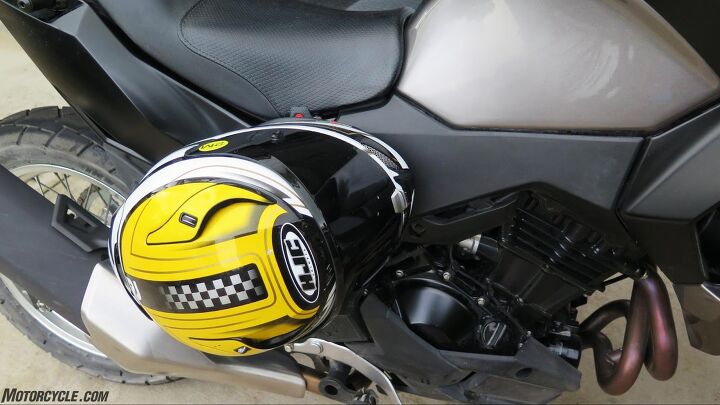








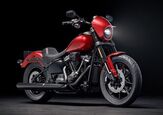

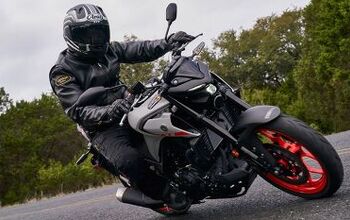
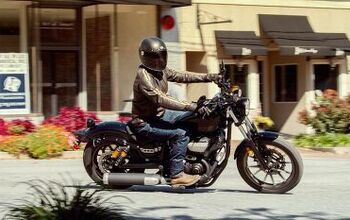
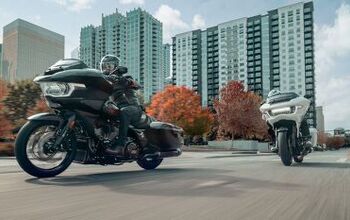

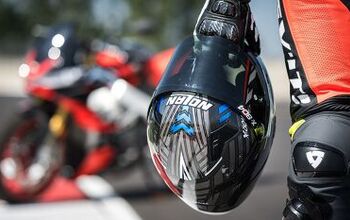

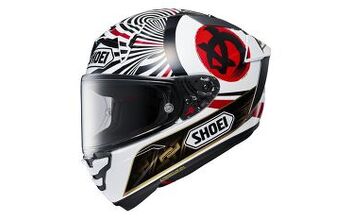
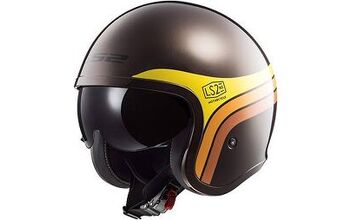

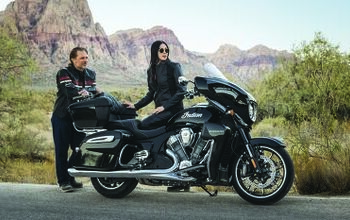

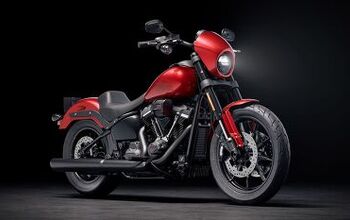



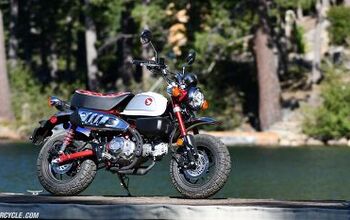


Comments
Join the conversation
And what about helmets that don’t have a D-Ring?
Two up touring usually puts a hefty premium on lockable storage and while some top boxes are big enough for two helmets, you'll usually have to empty the contents in order to make room for two helmets.
I've been toying with the idea of using a product made of small gauge cable that resembles a cargo net, and securing it to the bike with a cable or padlock. These are available on Amazon in different gauges and sold in different sizes. They can double as a cargo net and look promising as a way to make soft panniers more tamper proof as well. They can be purchased in a size that is larger than needed and sized down accordingly Use a Dremel tool cutting disk or angle grinder to make your cuts flush to the "overlapping links", which resemble a solid Ingot of metal smaller than a kernel of corn where cables intersect.